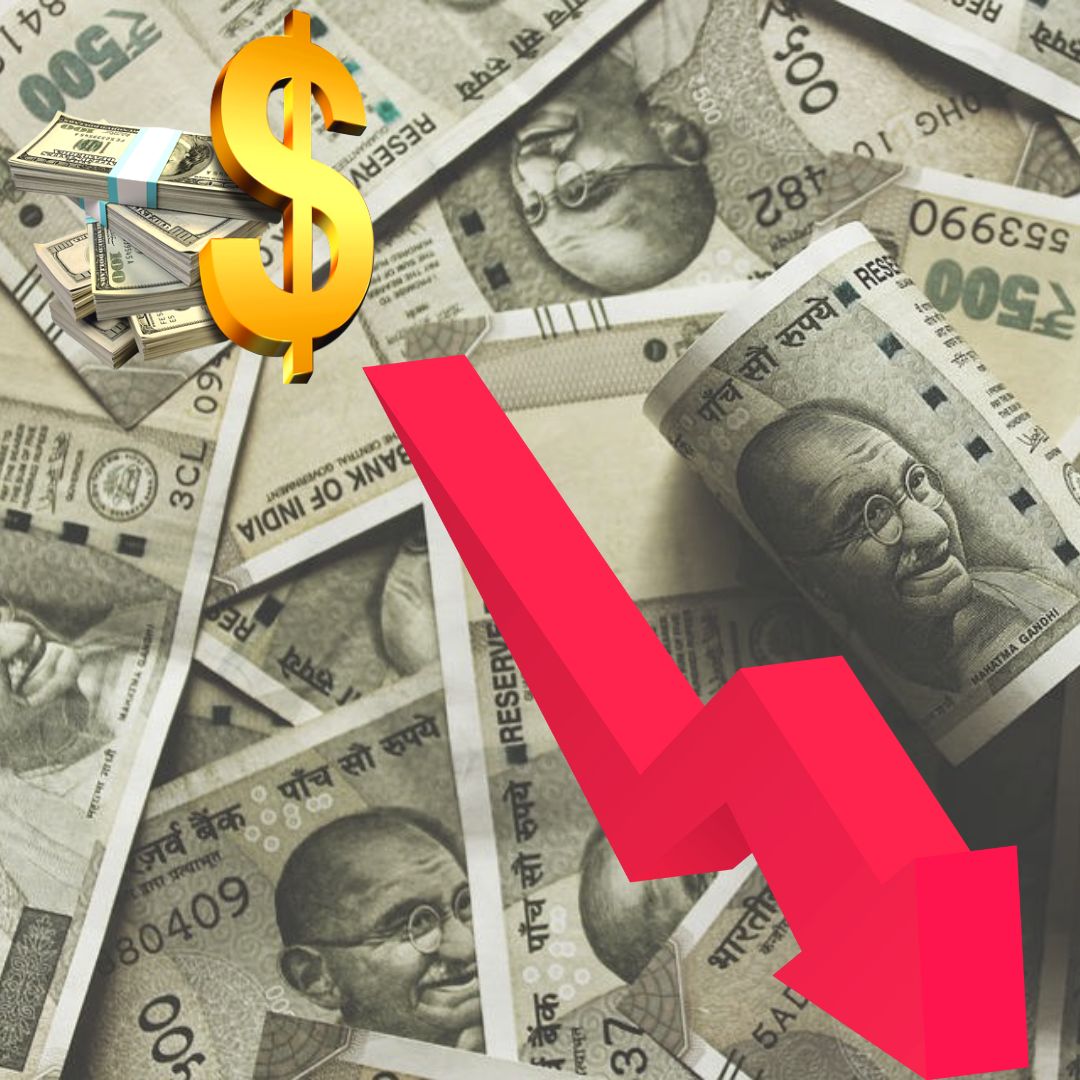Rupee Hits All-Time Low Of Past 79 Per US Dollar; Here Are Factors Responsible For Continuous Devaluation
Writer: Mrinalini Kaushik
She is a student of journalism, keen on learning new ways to unlearn, deconstructing news and life. Interested in exploring new media as medium is the message. Avid follower of sports and politics
India, 30 Jun 2022 9:02 AM GMT
Editor : Shiva Chaudhary |
A post-graduate in Journalism and Mass Communication with relevant skills, specialising in content editing & writing. I believe in the precise dissemination of information based on facts to the public.
Creatives : Shiva Chaudhary
A post-graduate in Journalism and Mass Communication with relevant skills, specialising in content editing & writing. I believe in the precise dissemination of information based on facts to the public.
For the first time, India's rupee reached a new low of 79 per dollar, with recent numbers showing an 18 paise decrease. This increases anxiety over India's economic recovery and trajectory for FY22.
The Indian rupee hit an all-time low for the first time with the level of 79 per dollar provisionally, as recorded on Wednesday, June 29. It marks the weakest close by the nation in the sixth stock trading session. The low record has created anxiety among governments already battling inflation, high oil prices and the threat of new Covid-19 variants.
The recent numbers show an 18 paise decrease, leading to the rupee touching 79.03 per dollar. Analysts attribute it to continuous foreign capital outflows due to flight-to-safety bets, as cited in NDTV.
Worrying Trend Of Rupee's Performance
The current all-time low value of the rupee has not been a one-time thing, as the trend of depreciation of the Indian currency has been persistent, with the previous session on June 28 closing the rupee at 78.86 per dollar. Since the past month, the rupee has continuously breached the 78 per dollar rate as prolonged inflation has exacted a heavy toll.
Some analysts believe that the Reserve Bank Of India (RBI) will have to modify its current interventionist strategy to reduce its depreciation. The process of intervention in future markets can, on the contrary, prove to be fatal and accelerate the rupee's decline in value.
Factors Responsible For The Devaluation
The primary reasons for the continuous weakening of the rupee value include foreign investors pulling out their funding and the high prices of crude oil due to the ongoing Russian invasion of Ukraine, as reported by Scroll.
The brent crude oil rate is at $118.38 (Rs 9,351.96) per barrel, depicting an increase of 0.34 per cent. The Brent rate is the global benchmark price for crude oil from the Atlantic basin, which is used to decide the price of crude oil in almost two-thirds of the world's trade. India is highly dependent on the import-driven oil supply, with 85% of its total imports being crude oil imports. This will have the power to increase inflation within the country and broaden India's trade and current account deficit.
Thus, the future of rupees remains weak with the current rate of foreign outflow of funds and dollar shortages because the United States is consolidating its Federal Reserve.
Also Read: Delhi Govt Extends Free Ration Scheme Till September 30, Expected To Benefit Over 73 Lakh People
 All section
All section














